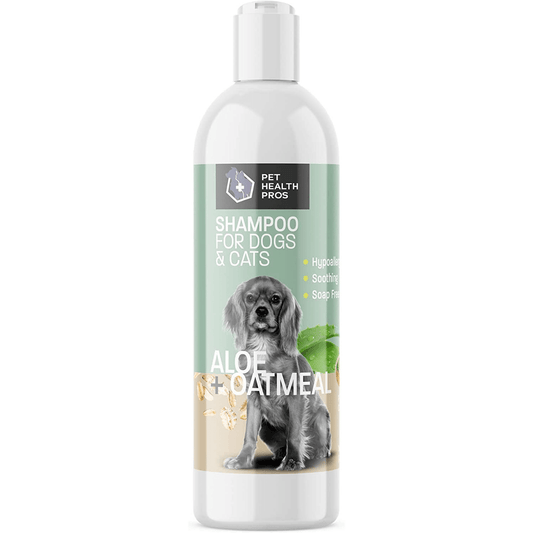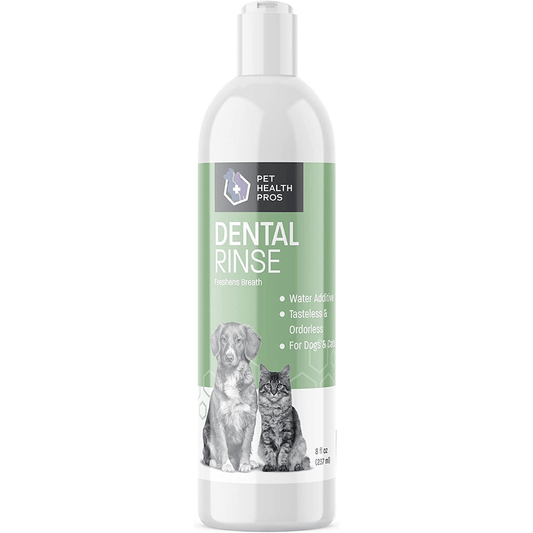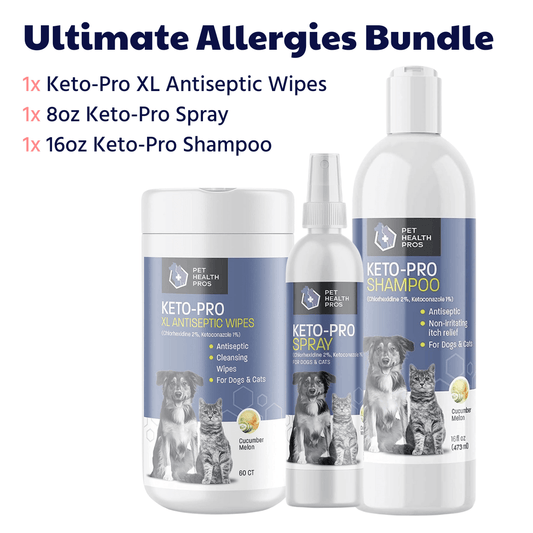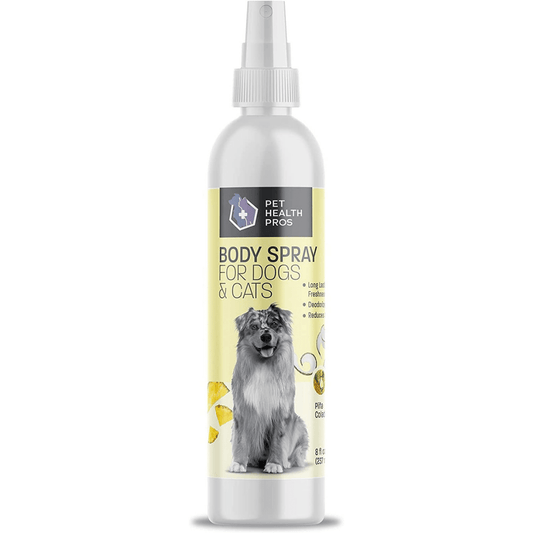Antiseptic flushes are vital tools in managing infections in dogs, providing a means to effectively clean and treat areas affected by bacteria and other pathogens. By understanding how to use these solutions appropriately, pet owners can significantly improve the health outcomes of their furry companions. This article delves into the various aspects of antiseptic flushes, from selection to application, ensuring that your dog receives the best care possible.
Key Takeaways
- Understanding the different types of antiseptic flushes helps in selecting the right one for your dog's specific condition.
- Proper preparation of the infected area and the dog is crucial before applying the antiseptic flush.
- A step-by-step guide ensures safe and effective application of the antiseptic flush, minimizing discomfort for your dog.
- Recognizing signs of allergic reactions and knowing when to consult a veterinarian can prevent complications.
- Regular use of antiseptic flushes can promote faster healing and prevent future infections, keeping your dog healthy and comfortable.
Understanding Antiseptic Flushes
What is an Antiseptic Flush?
An antiseptic flush is a solution used to clean and disinfect wounds or infections, particularly in animals like dogs. It helps in removing debris, bacteria, and dead tissue, thus preventing the spread of infection and promoting healing.
Types of Antiseptic Flushes
There are various types of antiseptic flushes available, each suited for different kinds of infections. Common types include saline solutions, iodine solutions, and chlorhexidine solutions. Chlorhexidine wipes are essential for canine first aid kits, offering antimicrobial properties that are effective against a wide range of pathogens.
Choosing the Right Antiseptic Flush for Your Dog
Selecting the right antiseptic flush depends on the type of infection and the sensitivity of your dog's skin. It's crucial to consult with a veterinarian to ensure the chosen flush is safe and effective for your pet's specific condition. Factors to consider include the active ingredients, the concentration of the solution, and any potential allergies your dog may have.
Preparation Before Application
Cleaning the Infected Area
Before applying any antiseptic flush, it is crucial to clean the infected area thoroughly. Remove any dirt, debris, or excess hair to ensure the antiseptic solution can contact the skin directly. Use mild, soap-free cleansers and avoid harsh chemicals that could exacerbate the infection.
Gathering Necessary Supplies
Ensure you have all the necessary supplies on hand before beginning the application. This includes the antiseptic flush, sterile gauze, gloves, and a syringe or applicator if needed. Having everything prepared will streamline the process and reduce stress for both you and your dog.
Ensuring Dog Comfort and Safety
The comfort and safety of your dog are paramount during the application of an antiseptic flush. Secure your dog in a comfortable position and reassure them throughout the process. If necessary, have another person help to gently hold your dog to prevent sudden movements that could cause injury.
Note: Always follow the specific instructions provided with the antiseptic flush, as improper application can lead to complications.
Step-by-Step Application Process
Applying the Flush
Begin by gently cleaning the infected area with a mild, non-irritating cleanser. Once the area is clean, carefully apply the antiseptic flush. Use a syringe or a soft cloth to apply the solution directly to the infection, ensuring that the entire area is covered. Allow the solution to work for several minutes before wiping any excess off with a clean cloth.
Monitoring Your Dog’s Reaction
After applying the antiseptic flush, it's crucial to observe your dog for any signs of discomfort or allergic reactions. Look for symptoms such as excessive scratching, redness, or swelling. If any adverse reactions occur, discontinue use immediately and consult your veterinarian. This monitoring is essential to ensure the safety and effectiveness of the treatment.
Post-Application Care
Post-application care involves keeping the treated area clean and dry. Avoid letting your dog lick or scratch the area to prevent irritation or infection. Regularly check the site for signs of healing or any potential complications. If the condition does not improve or worsens, it's important to seek veterinary advice. Maintaining a clean environment and following up with additional treatments as recommended by your vet can significantly aid in your dog's recovery.
Common Dog Infections and Antiseptic Treatments
Ear Infections
Ear infections are a common issue in dogs, particularly in breeds with floppy ears. Antiseptic flushes can help clear the infection and soothe irritation. They should be applied after gently cleaning the ear, ensuring that the solution reaches the lower ear canal.
Skin Infections
Skin infections can range from mild irritations to severe inflammations. Using an antiseptic flush helps in reducing bacteria and promoting healing. It's important to clip any fur around the infected area to ensure the flush contacts the skin directly.
Wound Care
For open wounds, antiseptic flushes are crucial in preventing infection. After cleaning debris and dirt from the wound, apply the flush gently to avoid distressing the dog further. Regular monitoring of the wound for signs of infection is essential for effective healing.
Safety Measures and Best Practices
Dosage and Frequency
Proper dosage and frequency are crucial for the safety and effectiveness of antiseptic flushes. Always follow the veterinarian's prescription or the manufacturer's guidelines. Overuse can lead to resistance or adverse reactions, while underuse may not effectively resolve the infection.
Recognizing Allergic Reactions
Be vigilant for signs of allergic reactions such as excessive itching, redness, or swelling. Immediate discontinuation of the product and consultation with a veterinarian is essential if any of these symptoms occur. Highlighting the importance of monitoring your dog's response after application can prevent complications.
When to Consult a Veterinarian
It is vital to consult a veterinarian if the infection does not improve or worsens after using an antiseptic flush. They can provide a comprehensive assessment and possibly recommend alternative treatments or additional interventions. This step ensures that your dog receives the most appropriate care for their specific condition.
Benefits of Using Antiseptic Flush
Effective Infection Control
Antiseptic flushes are crucial in managing bacterial and fungal infections in dogs, ensuring a rapid reduction in microbial activity. The use of antiseptic flush can significantly decrease the risk of infection spreading and becoming more severe.
Promoting Faster Healing
By reducing the bacterial load, antiseptic flushes not only control infections but also promote quicker tissue repair. This accelerated healing process is vital for your dog's quick recovery and return to normal activities.
Preventing Future Infections
Regular use of antiseptic flushes as part of your dog's hygiene routine can help prevent the recurrence of infections. Maintaining a routine helps establish a barrier against potential pathogens, keeping your dog healthier in the long run.
Customer Experiences and Feedback
Success Stories
Many pet owners have shared their positive experiences using antiseptic flushes, noting significant improvements in their dogs' health. One owner reported a drastic reduction in infection and faster healing times after regular application. These stories highlight the effectiveness of these products in real-world scenarios.
Handling Challenges
While many experiences are positive, some pet owners face challenges, such as determining the correct dosage and frequency of application. It's crucial to follow veterinary guidance to avoid complications. Here, owners learn through trial and error, eventually finding what works best for their pets.
Tips from Other Pet Owners
Experienced pet owners often share tips on how to apply antiseptic flushes effectively. A common suggestion is to ensure the dog is calm and comfortable before starting the treatment. They also recommend keeping the area clean and monitoring the dog for any signs of allergic reactions.
Note: Always consult a veterinarian before starting any new treatment to ensure it is suitable for your dog's specific condition.
At Pet Health Pros, we value your feedback and experiences as they help us improve and serve you better. Visit our 'Customer Experiences and Feedback' section to share your stories and read about how our products have made a difference. Your input is crucial for us to continue providing top-quality care for your beloved pets. Explore now and help us enhance our services!
Conclusion
In conclusion, utilizing antiseptic flushes as part of your dog's healthcare routine can significantly enhance their recovery from infections. By understanding the proper techniques and applications discussed in this article, pet owners can effectively administer these treatments to help their furry friends heal faster and prevent future infections. Remember, it's always advisable to consult with a veterinarian to ensure the antiseptic flush is suitable for your dog's specific condition. With the right approach and knowledge, you can contribute to your pet's health and well-being, ensuring they lead a happier, healthier life.
Frequently Asked Questions
What is an Antiseptic Flush?
An antiseptic flush is a solution used to clean and disinfect wounds or infections on a dog's skin or ears. It helps to eliminate bacteria and promote healing.
How do I choose the right Antiseptic Flush for my dog?
Choose an antiseptic flush based on the type of infection and your dog's specific needs. Consult with a veterinarian to ensure the selected flush is suitable and safe for your pet.
What should I do to prepare my dog for an antiseptic flush application?
Clean the infected area gently but thoroughly, gather all necessary supplies such as gloves and cotton balls, and ensure your dog is calm and comfortable before beginning the application.
How often should I apply the antiseptic flush to my dog's infection?
The frequency of application will depend on the severity of the infection and the specific instructions of the antiseptic flush. Always follow the guidance provided by your veterinarian.
What are the signs of an allergic reaction to an antiseptic flush in dogs?
Signs of an allergic reaction can include increased redness, swelling, itching, or discomfort at the application site. If you notice any of these symptoms, stop using the product and consult your veterinarian immediately.
When should I consult a veterinarian when using an antiseptic flush on my dog?
Consult a veterinarian if the infection does not improve with regular applications of the antiseptic flush, if the dog shows signs of an allergic reaction, or if you are unsure about the correct usage of the product.









